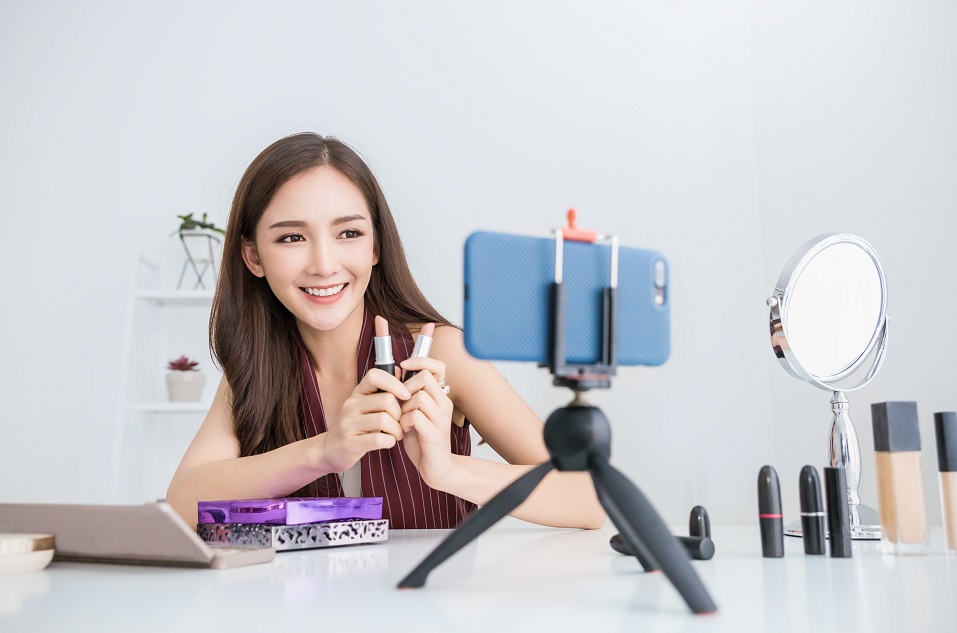Once you’re that bit more established, you can start exploring brand partnerships. These involve you working with a brand or an influencer to improve your profile.
You don’t need to have a specific number of subscribers or views to be eligible but it does help if you have a niche market within your audience.
>See also: How to create a YouTube channel for your small business
Before we continue, here’s a quick rundown of different branded partnership terminology.
Branded content: Usually paid for by a brand and features their products or services.
Brand deal: Partnership between creators and brands and is sometimes referred to as brand sponsorships too.
Brand integrations: A type of branded content where a creator finds a way to seamlessly feature a brand or product in their videos. Do something in the video that aligns with your own product’s brand.
Who should I partner with?
Partner with a brand that’s in line with your business’ values and what your customers may benefit from. If you run a football blog, it would be worth partnering with a company that sells good-quality footballs and other bits of kit. It’s very important not to partner with someone who is out of step with your audience’s values, like an ethical brand who partners with a brand that has a shady employment reputation.
On that note, it’s not only legal but it’s good practice to be transparent with your audience about any sponsorships – they’ll appreciate you more for it. Pay attention to their comments about the content and what they’d like to see in future as this could work into your potential brand partnering.
If it helps at all, spy on what your competitors are doing. It may give you some idea of who you can partner with and what content to create.
How do I find sponsors for my YouTube channel?
You could try a sponsorship platform. BrandConnect is just such a platform, created by YouTube, to facilitate these brand partnerships. Brands post ideas and campaigns to a forum which creators can pick up if they’re interested and contact the brand through the platform. It’s invite-only at the time of writing, but YouTube plans to roll it out to more creators.
Alternatively, you can contact sponsors yourself. This can be done by finding a relevant contact’s details online or by tagging them on another social media channel. Brands may also contact you as your channel grows.
Be ready to pitch. Prepare a media kit with a story behind it. You can be pretty flexible with the design, opting for a one-page wonder or a flashy presentation deck. Include stats like viewing figures and demographics, your favourite content and other brands that you’ve worked with. You should also mention what value you can bring them and why your audience will love their brand.
Guide the vision and creativity of the content you produce as this ball is still very much in your court. Of course, the brand will have some input but it will most likely be on your channel.
What type of branded content should I produce?
There are loads of different kinds of content you can do, but here are a few ideas:
- Product hauls
- Comedy sketches
- Recipe videos
- Unboxing
- Tutorials
- Gameplays
>See also: How to film a YouTube video
Your legal obligations
Receiving payment for creating and posting content counts as advertising here so you need to be careful about that.
YouTube gives you the option to include a card saying ‘This includes a paid promotion’ at the top of the video. Not only does this let your audience know that they should be expecting an advert, but it stops YouTube placing an advert that may be in conflict with the brand that you’re working with.
Make you keep to your local rules. In the UK, this is the Advertising Standards Authority (ASA). In short, you need to make it clear upfront that it’s an advert. For instance, you can put #ad in the title of the video or the thumbnail, like the one from SORTEDfood below. Anything mid-way through or at the end won’t be considered in keeping with the Committee of Advertising Practice (CAP) Code.
Working with influencers
Flipping it round, working with influencers can boost your brand name and reach. Viewers trust the influencers that they watch and, in turn, could create more trust in your brand. Again, YouTubers who serve a niche audience could work better for you. They’re likely to charge a smaller fee than big-ticket influencers too. Try ‘micro-influencers’ – those with between 5,000 and 25,000 subscribers, though definitions vary are a good target to start with.
Search products/services similar to yours on YouTube and find out which influencers are promoting them. Being on the other side, leave the creativity to the YouTuber as they know their style of video. Talk about transparency from their end and how they disclose sponsorships to ensure you’re in alignment.
If you’re doing affiliate marketing (including a link to a product that you get paid for per click) you’re effectively a secondary advertiser and you need to make that clear. The responsibility for clarity lies both on the brand and the content creator.
These labels are accepted by the Advertising Standards Authority and the Competition and Markets Authority (CMA). The ASA has a a handy guide for influencers (but can be applicable to other brands) to show how to mark ads as ads.
Is it time for me to start thinking about brand partnerships?
Only you can really know the answer to this one. If you offer a beauty product, you’ll have a lot of competition for brand partnerships and influencers, though there will be more opportunities. If your product is more niche, like crochet sets, there’s more scope to collaborate with a craft or crochet brand/channel to reach a more dedicated audience.
If you’re still unsure, this video from the YouTube Creators channel will tell you more about partnering with brands.





